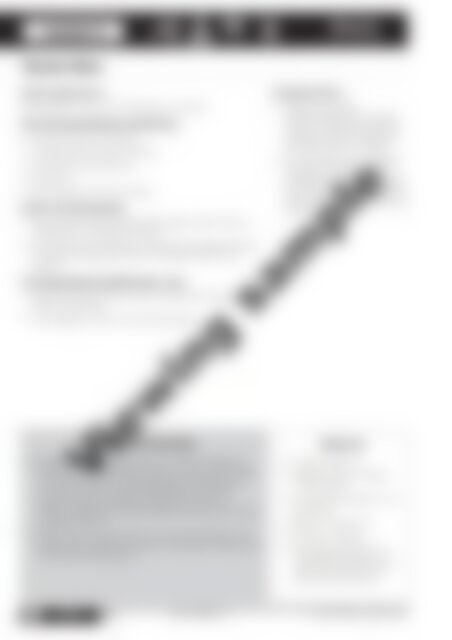PR-6171IRE Science A STEM Approach - 1st Class
You also want an ePaper? Increase the reach of your titles
YUMPU automatically turns print PDFs into web optimized ePapers that Google loves.
Lesson 4<br />
Materials<br />
IT’S A STRETCH<br />
Teacher Notes<br />
<strong>Science</strong> Inquiry Focus:<br />
What happens when some materials are cooled?<br />
Skills Development/Working Scientifically:<br />
• Questioning and predicting<br />
• Investigating and experimenting<br />
• Estimating and measuring<br />
• Analysing<br />
• Recording and communicating<br />
<strong>Science</strong> Learning Outcomes:<br />
• Pupils observe and describe what happens when various<br />
materials are cooled in the freezer.<br />
• Pupils observe the difference between the shape that water<br />
can make compared to when it is cooled and forms ice<br />
shapes.<br />
Technology/Engineering/Mathematics Links:<br />
• Indirectly calculating how much of each liquid is required to<br />
fill an ice cube tray.<br />
• Using digital camera to record observations.<br />
Background Information<br />
• Most liquids when frozen become a solid. Oil behaves<br />
differently when cooled because it is a lipid, which means<br />
it can stay in the same state regardless of temperature.<br />
Oil does not have a specific freezing point. Oil may<br />
appear to look somewhat solid when frozen but it<br />
behaves differently and feels different to other truly frozen<br />
substances like ice.<br />
• Water, milk and juice will become solid and freeze in the<br />
shape of the container they are in, and stay this shape until<br />
they melt to liquids again.<br />
Assessment Focus:<br />
• Observe the pupil’s<br />
understanding of the concept<br />
that ice is made from water that<br />
has been cooled in the freezer<br />
during discussions in Step 2.<br />
• Use the experiment worksheet<br />
on page 113 as a formative<br />
assessment of the pupil’s ability<br />
to conduct an investigation and<br />
observe how a material changes<br />
when cooled.<br />
Resources<br />
Viewing sample<br />
• Copy of page 112<br />
• Sufficient copies of page<br />
113 for pupils<br />
• Ice cube trays/shapes – one<br />
per group<br />
• Water, milk, juice, oil<br />
• Access to a freezer<br />
• Pre-prepared frozen ice<br />
cube trays with water, milk,<br />
juice and oil (optional—to<br />
speed up the process)<br />
110 <strong>Science</strong>:<br />
A <strong>STEM</strong> AP<strong>PR</strong>OACH<br />
<strong>1st</strong><br />
CLASS<br />
978-1-912760-15-2 Prim-Ed Publishing – www.prim-ed.com

















